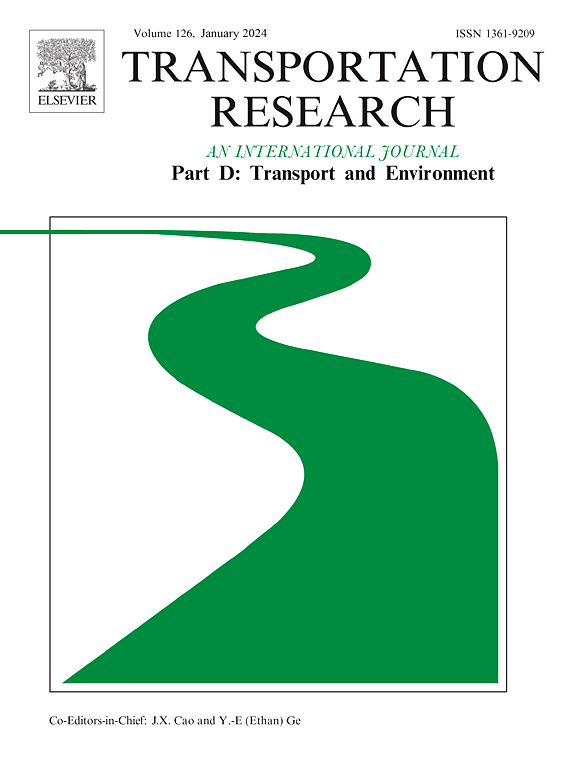Physicochemical characterization of brake abrasion particles from trucks under laboratory conditions
IF 7.3
1区 工程技术
Q1 ENVIRONMENTAL STUDIES
Transportation Research Part D-transport and Environment
Pub Date : 2025-07-04
DOI:10.1016/j.trd.2025.104864
引用次数: 0
Abstract
The study of non-exhaust particle emissions is crucial in the context of the global vehicle fleet’s electrification. These particles, often overlooked, have harmful impacts on the environment and human health. This paper presents an exhaustive characterization of particles emitted from heavy-duty truck brake wear under controlled conditions. Braking tests were analyzed by correlating braking conditions with particle concentration collected by an Electrical Low Pressure Impactor (ELPI + ). The chemical composition was determined using Scanning Electron Microscopy and Energy Dispersive X-ray Spectroscopy (SEM-EDX). Results show that ultrafine particles (<100 nm) dominate emissions, with brake wear tracers such as Fe, Cu, Mo identified. The study also reveals that brake disc temperature significantly influences emissions. This work aims to enhance understanding of non-exhaust particulate emissions from heavy-duty vehicles, contributing to the development of effective particle collection systems and raising awareness of their environmental and health effects.
实验室条件下卡车制动磨损颗粒的物理化学特性
在全球汽车电气化的背景下,对非废气颗粒排放的研究至关重要。这些经常被忽视的颗粒对环境和人类健康产生有害影响。本文提出了一个详尽的表征颗粒排放从重型卡车制动磨损控制条件下。通过将制动条件与电动低压冲击器(ELPI +)收集的颗粒浓度相关联,分析了制动试验。利用扫描电子显微镜和能量色散x射线能谱(SEM-EDX)测定其化学成分。结果表明,超细颗粒(<100 nm)主导了排放,并鉴定出了铁、铜、钼等制动磨损示踪剂。研究还表明,制动盘温度对排放有显著影响。这项工作旨在加强对重型车辆非废气颗粒排放的了解,有助于开发有效的颗粒收集系统,并提高对其环境和健康影响的认识。
本文章由计算机程序翻译,如有差异,请以英文原文为准。
求助全文
约1分钟内获得全文
求助全文
来源期刊
CiteScore
14.40
自引率
9.20%
发文量
314
审稿时长
39 days
期刊介绍:
Transportation Research Part D: Transport and Environment focuses on original research exploring the environmental impacts of transportation, policy responses to these impacts, and their implications for transportation system design, planning, and management. The journal comprehensively covers the interaction between transportation and the environment, ranging from local effects on specific geographical areas to global implications such as natural resource depletion and atmospheric pollution.
We welcome research papers across all transportation modes, including maritime, air, and land transportation, assessing their environmental impacts broadly. Papers addressing both mobile aspects and transportation infrastructure are considered. The journal prioritizes empirical findings and policy responses of regulatory, planning, technical, or fiscal nature. Articles are policy-driven, accessible, and applicable to readers from diverse disciplines, emphasizing relevance and practicality. We encourage interdisciplinary submissions and welcome contributions from economically developing and advanced countries alike, reflecting our international orientation.

 求助内容:
求助内容: 应助结果提醒方式:
应助结果提醒方式:


